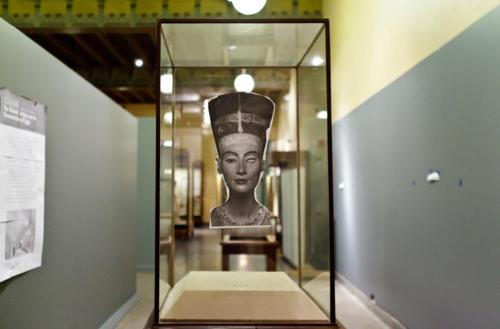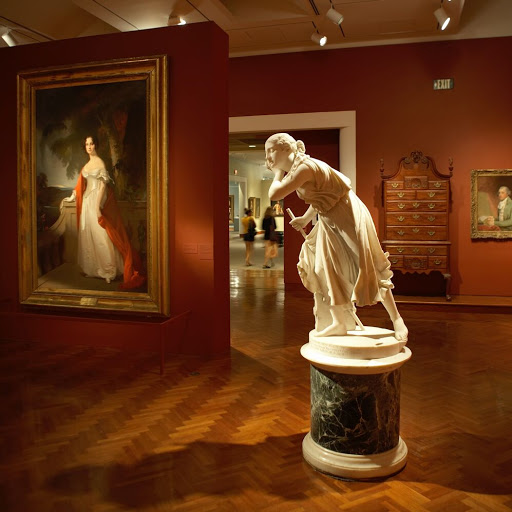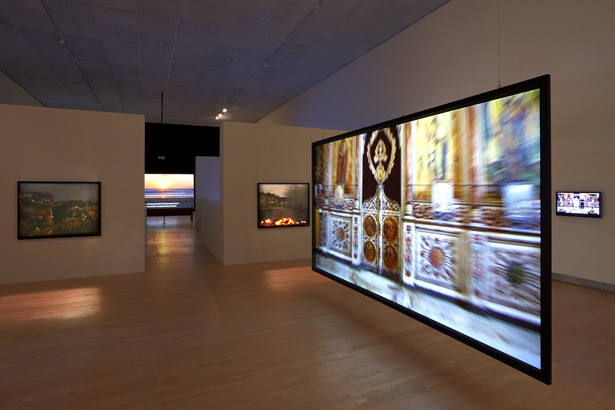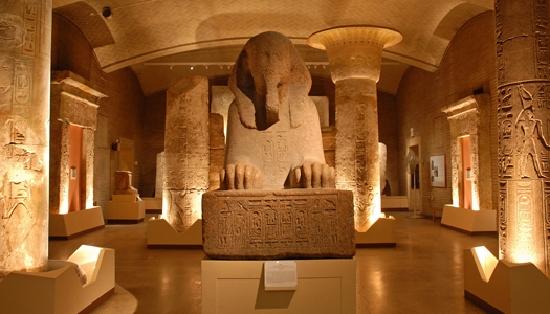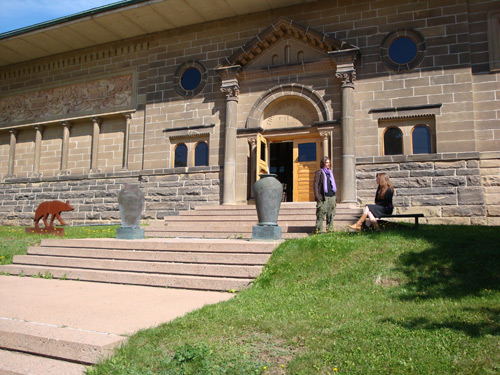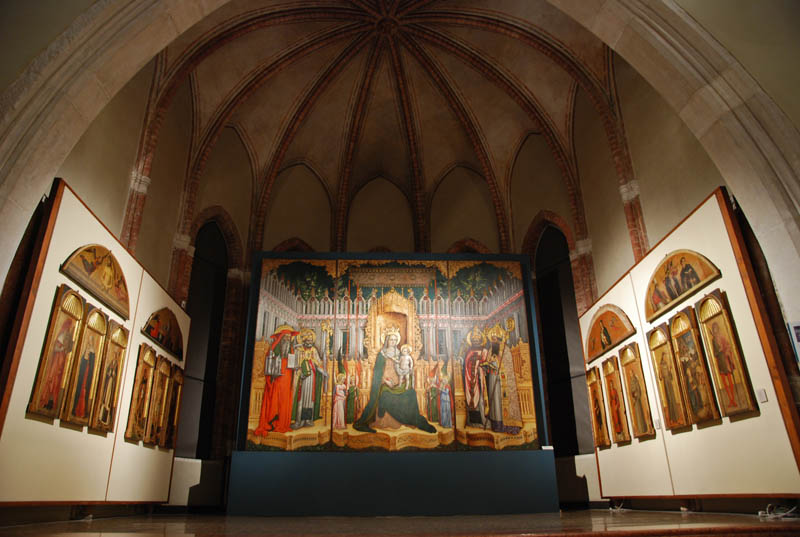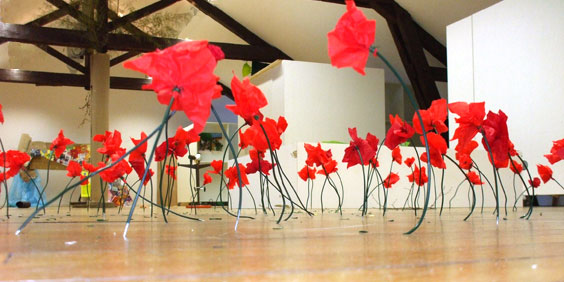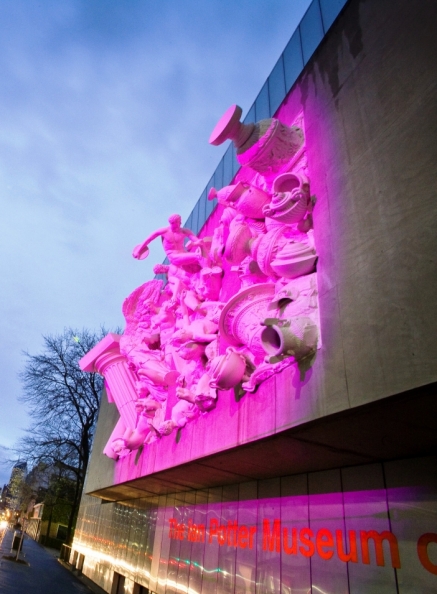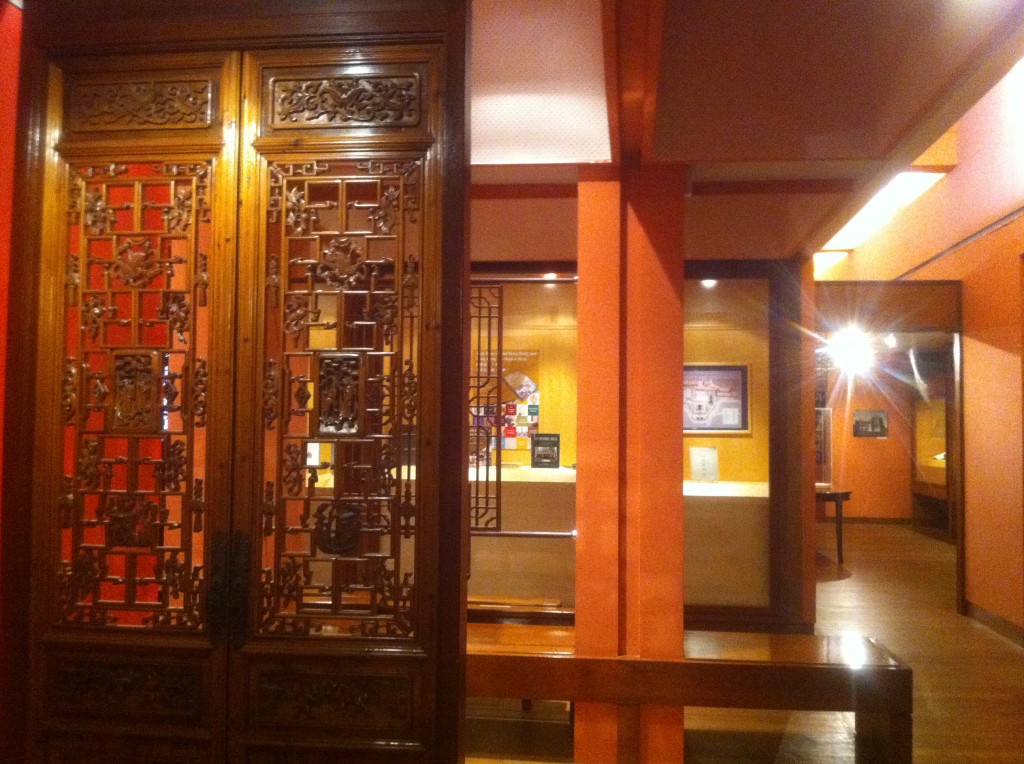Universities are natural locations for museums and art galleries devoted to the exposition of art of every kind throughout the ages of human history. These institutions provide scholarship and research resources that are instrumental in the preservation and interpretation of works of art, making them accessible and intelligible to the general public. They are also places of study for students of art, history, archaeology, material science, and other related disciplines and play a vital role in the education of future artists, museum curators, and historians.
Art museums associated with universities and colleges are also often located in buildings of remarkable architectural significance and beauty. Many of these buildings are works of art in their own right. These buildings, and the works of art they house, provide a gateway of interface between the public and these institutions, and are a benefit to both in numerous ways. They are also frequently venues for lectures, workshops, films, performances, and other interactive programs that allow the public to participate in the world of art and to meet and interact with the artists themselves.
Each museum has its own unique history and area of focus, together preserving and presenting the enormous range of human artistic endeavor over the ages of human history. Many university and college art museums and galleries began with the generous donations of private collections by art patrons. Many others have been founded by funds from philanthropists, and public funding also plays a major role in the financial establishment of these institutions.
These are only a few of the many hundreds of art galleries and museums that are part of colleges and universities around the world. While these museums represent some of the best and most beautiful, many other worthwhile museums are located in other colleges and universities around the world as well. Many of these museums allow public access free of charge or for minimal cost. Others that charge regularly often have free admission days at least once a month or on holidays. Some art museums are always open to the public and some have sections that are only open by special arrangement or to students, faculty and researchers.
United States
Allen Memorial Art Museum
Founded in 1917 and ranking among the most prestigious art museums in the country, the Allen Memorial is located in a spectacular Renaissance style building designed by architect Cass Glibert. The extensive collection of 13,000 art works from almost every culture and region of the world covers the range of human artistic expression over all of human history. Its extensive collection is particularly rich in examples of 17th century Dutch and Flemish artists and 19th and 20th century European and American works. An unusual feature for art students at Oberlin College is the Art Rental program where students can rent up to two works of art from the museum for a semester. Original works by Toulouse-Lautrec, Picasso, and Red Grooms are only a few of the many artists whose art is available in this unique program.
Bowdoin College Museum of Art
Bowdoin Museum of Art began with a donation of a private art collection by James Bowdoin III and his family in 1811. The building where the collection is now housed was constructed in 1894 and was designed by famous architect Charles Follen McKim who also designed the Boston Public Library. The comprehensive collection of over 20,000 pieces of art span the time periods from ancient Mediterranean cultures of Greece and Rome to the present and include paintings, decorative arts like furnishings, tapestries and jewelry, sculpture, and works on paper.
Yale University Art Gallery
Yale’s University Art Gallery and museum is located in several separate buildings spread out around the campus. Renovations and expansion of the facilities were completed in 2012. Significant collections include African art, American paintings and sculptures, ancient coins and medals, specimens from ancient American indigenous cultures, and American decorative art. There is also a large collection of early Italian paintings and drawings by master artists of the Italian Renaissance.
Tang Museum, Skidmore College
Tang Museum is an interdisciplinary teaching museum serving undergraduate students studying liberal arts. Students and faculty work together as museum advisors and curators in designing 12 temporary exhibitions each year. There is a strong focus on interdisciplinary management of the museum and the shows that are presented, bringing an exceptional degree of interpretative depth to the exhibits. The Museum regularly publishes a well-respected catalog of its shows that also includes extensive interviews with artists, curatorial information, and art history articles.
The Oriental Institute at the University of Chicago
Founded in 1919 by James Henry Breasted, this museum is internationally renowned for extensive research of the art of the ancient Near East. The exhibits reflect the museum’s strong emphasis on research in archaeology, philology, and history of Near Eastern cultures and the many art forms they produced including carvings, pottery, ceramics, bronze, furnishings, and jewelry. The museum regularly hosts special programs for children and families, conferences and symposia, films, and performances as a part of their interpretative program for the public.
Princeton University Art Museum
A founding gift of porcelain and pottery by a private donor established the Princeton Art Museum in 1882 at a time when art history was considered a new area of study at universities. The collection now contains over 72,000 art works with special emphasis on ancient Mediterranean cultures of Greece, Rome, Byzantine, and Egyptian artifacts. Chinese art across the centuries and North and South American art works are also well represented. The museum has a dual purpose of exhibiting art for public viewing and teaching art history to the students at Princeton and to the community at large. A highlight of the holdings is the Maya Vase Collection Project where meticulous restoration of these objects has revealed their original colors and forms using advanced restoration methods and technologies. This is one of the most impressive collections of Mayan pottery on display at a museum.
The Rose Art Museum of Brandeis University
Modern and contemporary paintings are the primary focus of the collections at the Rose Art Museum established in 1961. Named for its benefactors Edward and Bertha Rose, the collection contains over 8,000 pieces, primarily representing artists of the United States from the 1960s and 1970s. This core collection covers American art from the mid 20th century to the present. Among the artists represented are works by William de Kooning, Jasper Johns, Andy Warhol. Roy Liechtenstein, Robert Rauschenberg, and Cindy Sherman.
University of Pennsylvania Museum of Archaeology and Anthropology
This enormous museum contains over one million objects collected since the museum’s inception in 1887. Many pieces were obtained through the University’s own field research and excavations in the Middle East. The African collection is one of the largest in the U.S., containing over 20,000 specimens of great rarity. A large percentage of these objects were collected by the famous German ethnographer Leo Frobenius in the area of Africa formerly known as the Congo between the years of 1891 and 1937. This was at the early period of European exploration in Africa and contain artifacts that are no longer obtainable.
The largest section of the museum is the American Section with 300,000 objects from the entire span of North and South America, covering all of human history in the Americas. The Babylonian Section contains the largest collection in the world of clay tablets from ancient Sumerian and Akkadian cultures with 30,000 specimens. Most of these objects were collected during the University’s own research excavations in Nippur and Ur in what is now Iraq. The museum’s collection of ancient Egyptian and Nubian artifacts is the largest in the U.S.
Weisman Art Museum, University of Minnesota
American modernism, Korean furniture, and ancient ceramics, including a vast collection of Mimbres pottery from the ancient South West American indian culture, are among the highlights at this museum. A large number of the total 17,000 pieces are displayed in diverse locations around the campus in public places such as hallways, courtyards, plazas, and foyers making the campus grounds and buildings an integral part of the museum’s exhibition area. Other works are housed in the museums’ galleries and exhibit halls where lectures and other presentations are also frequently held.
Mary & Leigh Block Museum of Art, Northwestern University
Over 5,000 prints, drawings, photographs, and textiles from the 15th century to the present comprise the core of this museum’s collection. Architectural drawings and other artifacts from construction projects done by the U.S. Works Progress Administration (WPA) and the Farm Security Administration (FSA) in the 1930s are a significant part of the collection. These photographs and drawings depict the many building projects like dams, bridges and public buildings undertaken by these administrations. The Block Museum of Art has a strong interest in though provoking exhibits that include computer generated artwork and experimental performance work. Contemporary and classic art films are regularly screened at the museum’s Block Cinema.
Florida Southern College and the Architecture of Frank Lloyd Wright
This campus was designed by world renowned architect Frank Lloyd Wright at the height of his career when he was 70 years old. Wright toured a grove of orange trees in the late 1930s where the college now stands and envisioned a campus that incorporated steel building design elements representing the strength of industry; green grass representing the forces of nature and humanities’ relationship to it; and buildings and structures that face the sun, representing the enlightenment brought about through college and university earning. This campus has the largest concentration of Frank Lloyd Wright architecture located in one place with a total of 12 buildings. The Child of the Sun Visitor Center opened on the campus in 1992 to display and examine the works of America’s, and perhaps the world’s, most famous architect. A gift shop is also located nearby where books and other articles related to Frank Lloyd Wright can be purchased.
Wellesley Davis Museum and Cultural Center
A world-wide collection of paintings, sculpture, works on paper, photography, and decorative objects are part of the permanent collection at the Wellesley Davis Museum and Cultural Center. An exhibit called “Perceiving Art in Space” uses painting, sculpture, video, and music to examine how artists represent physical space in their artwork. A large collection of American art includes many pieces from Mexican and Latin American artists from prehistoric times to the present. Another exhibit entitled “Stories, Ideals, Beliefs” displays paintings and sculptures that have particular relevance to how artists represent and examine these concepts in their art.
Vanderbilt University Fine Arts Museum
As with many museums and art galleries, Vanderbilt Fine Arts Gallery was founded by a donation of art works by a private individual. The current collection of 5,500 art works began in the early 1960s with a donation by Anna Hoyt of 105 prints by renowned, Old Master artists from Europe. The collection now contains a large selection of works by contemporary artists as well, including Arion Press, Frank O’Hara, Louis Bourgeois, and many others. There is also an extensive collection of contemporary poster art and many objects from ancient Egyptian, Etruscan and Greek cultures including ceramics, bronze pieces, and sculpture.
Smart Museum of Art, The University of Chicago
Established in 1974, this museum contains an extensive collection of Asian scroll paintings and ceramics from China, Japan, and Korea. European modern and contemporary art and design works are also a major part of the holdings. Figurative artworks, works on paper, and small sculptures are exhibited in ways that shed light on the methods used by artists in accomplishing their creations. The Smart Museum of Art has a particular interest in making the processes of art-making come to life for the viewer.
Canada
Art Gallery of York University, Toronto
Image Source
Contemporary art is exhibited in frequent temporary shows at the Art Gallery of York University. Exhibits in 2012 included shows by Angelica Teuta, Maria Isabel Rueda, Diane Borsato, and Will Munro. This gallery strives for an exceptionally innovative program that involves artists and the public in a collaborative exchange, making its programs unusual, provocative, and highly interactive. Special features include a touring performance bus, artist in residence program, and web based art projects. Many temporary exhibits, performances, films, and other media are a regular part of York University Art Gallery’s program.
Museum of Anthropology, University of British Columbia
This is Canada’s largest teaching museum. It is located amidst the spectacular cliffside scenery of Point Grey outside the city of Vancouver in buildings of impressive architectural style and construction. Indigenous artists help build some of the impressive wooden structures that are a part of this building. Over 38,000 ethnographic objects are available for viewing by the public and for use in research and teaching at the University. The facility was recently expanded and renovated, bringing it up to the highest modern standards for the preservation and exhibition of its collections as well as the comfort and convenience of its visitors. A major emphasis in the collections is on the indigenous cultures of the Americas with totem poles, feast dishes, gold and silver jewelry, carved boxes, and a wide selection of ceramics among the many objects on display.
Agnes Etherington Art Centre, Queen’s University
Since 1957, the Agnes Etherington Art Centre has been the repository for impressive and significant collections of contemporary art, historical Canadian art, and European art of the Baroque era, especially from the Dutch Golden Age, including works by Rembrandt. An extensive renovation in 2000 restored the Etherington House and expanded the Art Centre. The public spaces now feature eight climate-controlled galleries totaling 725 square meters, a public programs Studio and a multipurpose Atrium, Shop and Art Rental & Sales space. With their generous vault, the Art Centre totals 1720 square meters. Fifteen temporary exhibits are presented each year along with numerous lectures, workshops, and family and school programs, making this Art Centre highly interactive with the community.
Owens Art Gallery, Mount Allison University, New Brunswick
Owens Art Gallery is the oldest university art gallery in Canada and opened its doors in 1895 in a building designed by the architect Edmund Burke. This gallery has a long tradition of supporting women artists and now has a collection of over 3,200 works of paintings, prints, sculpture, and multimedia works by both Canadian and international artists. It has gained international repute for its contribution to the exposition of works of art by women artists.
Italy
Gallerie dell’ Accademia, Venice
Located at the site of an ancient fraternal order at the Scuola Grande of Santa Maria, this gallery features some of the most famous paintings of the Venetian school of Renaissance art and is one of the most important art galleries in the world. In the 24 exhibit rooms, masterpieces such as Giogione’s Tempest, a group of paintings of Madonnas by Giovanni Bellini, Mantegna’s St George, and Titan’s John the Baptist are on display along with numerous works by Cima da Conegliano, Tiziano and other masters. There are also examples of Byzantine and Gothic era artworks, sculpture, and ceramics. The setting is at the heart of Venice and also provides extraordinary views of this ancient city and surrounding area.
Pinacoteca di Brera, Milan
This is another world-class painting gallery featuring collections of famous masterpieces by Italian and other European paintings by Raphael, Belini, and Ruben’s Last Supper, along with works by Titian, Donato Bramante and van Dyck. Rooms are organized by time period with interpretative displays that help the viewer understand the progression of art history during this important period.
United Kingdom
Ashmolean Museum of Art and Archaeology, University of Oxford
In 1908, two ancient Oxford University institutions were combined, creating the Ashmolean Museum of Art. One of these former galleries was the University Art Collection which was the first university art museum in the world established in 1620. That gallery began with a collection of portraits of distinguished contemporaries persons which now reside at the Ashmolean Museum. In the 1820s, specimens from the natural world began being added to the collection, and shortly after that, archaeological artifacts also joined the collection. Around this same time, the painting section began adding landscapes and paintings of historical scenes and others depicting contemporary life of the common person. The Museum now holds a comprehensive collection of both art and archaeological artifacts.
The Fitzwilliam Museum, Cambridge
The Fitzwilliam Museum has one of the most important collections of art in the U.K. Richard VII, Viscount of Merrion left his personal collection of art and manuscripts to the University of Cambridge along with funds for constructing a building to house them. This collection included 144 paintings by Dutch masters and 500 folio albums of engravings and medieval manuscripts, including handwritten musical scores by Handel Purcell, and other great composers. Since then, the museum has added Egyptian, Greek, Roman, and Cyprian artifacts as well as sculpture, decorative arts, jewelry, medieval armor, and coins and medals to their extensive collection.
The Hamilton Kerr Institute is a separate department within the museum devoted to the conservation of paintings and the education of painting restoration professionals and curators. The Institute uses the highest standards of technical and historical methodology and research in an interdisciplinary approach for conserving and displaying major works of art to the public.
The Courtauld Gallery, The Courtauld Institute, London
The Courtauld Institute of Art is a gallery that specializes in Impressionist and postimpressionist art. While this is their main focus, their collection also includes works from the Renaissance up to the present and masterpieces by DaVinci, Van Gogh, Picasso, Rubens, and many others are among the many paintings found here.
Sweden
Bildmuseet, Umea University, Sweden
The Bildmuseet is the leading art gallery in Sweden specializing in the works of contemporary Swedish artists. Their wide ranging programs include exhibits of paintings and other visual media, design workshops, lectures, performances, concerts and a variety of programs for the public. The gallery also has many shows featuring a international artists in many mediums. Shows scheduled for 2013 include photographs by Indian photographer Dayanita Singh, a show called “Signs of Conflict,” presenting political posters from the conflicts in Lebanon between 1975 and 1990, and films and photographs by American artist Eve Morgenstern called “Facades of Crisis,” depicting the crisis of decaying housing stock in the United States.
France
Ecole des Beaux-Arts
Galleries and schools belonging to the Ecole des Beaux-Arts are located in Paris across the Seine from the Louvre, and also in Dijon, Lyon, Lorient, Bourges, and Nancy. For 350 years, this institution has collected and displayed drawings, paintings, sculptures, and architectural drawings from around the world while providing high quality art training to students at the University. Louis XIV chose students from this school to design the decor of the royal apartments in Versailles. The Paris school is the original location of the Beaux Arts architectural movement. The school was originally only open to male students, but in 1898, American architect Julia Morgan was the first woman to be admitted. She went on to become one of the world’s most famous architects.
Australia
The Ian Potter Museum of Art, The University of Melbourne
Founded in 1972, this is the largest university based art museum in Australia. Collections range from neolithic artifacts to contemporary works with special emphasis on Australian artists including indigenous artists. All art media are represented from painting, sculpture, multimedia, works on paper, decorative arts, pottery and ceramics with over 20,000 total objects in the collections. Lectures and other public programs are ongoing and frequent, making the Ian Potter Museum an interactive public forum for Australian artists and the community at large.
Monash University Museum of Art, Caulfield East
This art gallery is at the cutting edge of experimental and innovative curatorial and display of contemporary art. The museum is considered a center of excellence in research based curatorial practices of research, promotion, and preservation of Australian art from 1960 to the present. Many contemporary Australian artists are represented in the collection.
Hong Kong
University Museum and Art Gallery, The University of Hong Kong
Originating as the Fung Ping Shan Museum of Chinese Art and Archaeology in 1953, the University of Hong Kong Museum and Art Gallery is the oldest art museum in Hong Kong. More than 1,000 objects and artworks from Chinese antiquity including ceramics, paintings, and the largest single collection of Yuan dynasty Nestorian crosses in the world are part of the collection. Carvings in jade, wood, and stone from several Chinese dynasties are also on display. There are also frequent exhibits of contemporary Chinese art. Near the Art Gallery is the Tea Gallery where visitors can experience the diversity and history of Chinese tea culture while sampling a wide selection of teas and relaxing in the tranquil atmosphere.
Philippines
Ateneo Art Gallery, Ateneo de Manila University
The first art gallery to be opened in the Philippines, this gallery displays over 500 prints, paintings, drawings, sculptures, posters, and photographs by international and Philippine artists. Works from the Renaissance to the present include examples by Rembrant, Goya, Delacroix, Toulouse-Lautrec, Picasso, and Philippine artists Fernando Amorsolo and Fabian de la Rosa. There is an especially rich collection of works by social realists from the 1970s and 1980s that has world renowned reputation.
Singapore
NUS Museum, National University of Singapore
The primary focus of collections at this gallery in on Southeast Asian art. The gallery opened in 1955 and contains the Straits Chinese Collection of textiles and paintings. Provocative sculpture by contemporary artist Ng Eng Teng embody the range of emotions and conditions of the human race as part of the permanent collection.
Art galleries and museums are crucial institutions for preserving, interpreting and exhibiting the astonishing array of artistic endeavor of human beings over the ages. University and college art galleries and museums play a special role in this activity by bringing advanced scholarship, financial resources, staff and volunteers into the process of making art available to the public. College and University art museums and galleries will continue to be at the forefront of preserving, interpreting, and exhibiting the world’s art and making it accessible to the public.






